52 Weeks of Inspiring Illustrations, Week 12: the typographical beauty of “The Muses welcome” (1618)


On the 15th of May, 1617, King James VI & I landed at Port ‘Seatown’ (now Seton) to begin what would be his only homecoming tour of Scotland. James left Scotland 14 years earlier to become the first King of Great Britain and Ireland. James stayed in Scotland until the beginning of August of that same year and, although resident in Edinburgh, he spent much of his time touring his northern kingdom. James visited Scotland under the pretense of celebrating his 50th year as King of Scotland, however the political motives of James’s trip to his homeland are now clear in hind-sight: his main objective was to try and align the Church of Scotland more to the Anglican Church, evident in his passing of the Five Articles of Perth in the year following this tour.
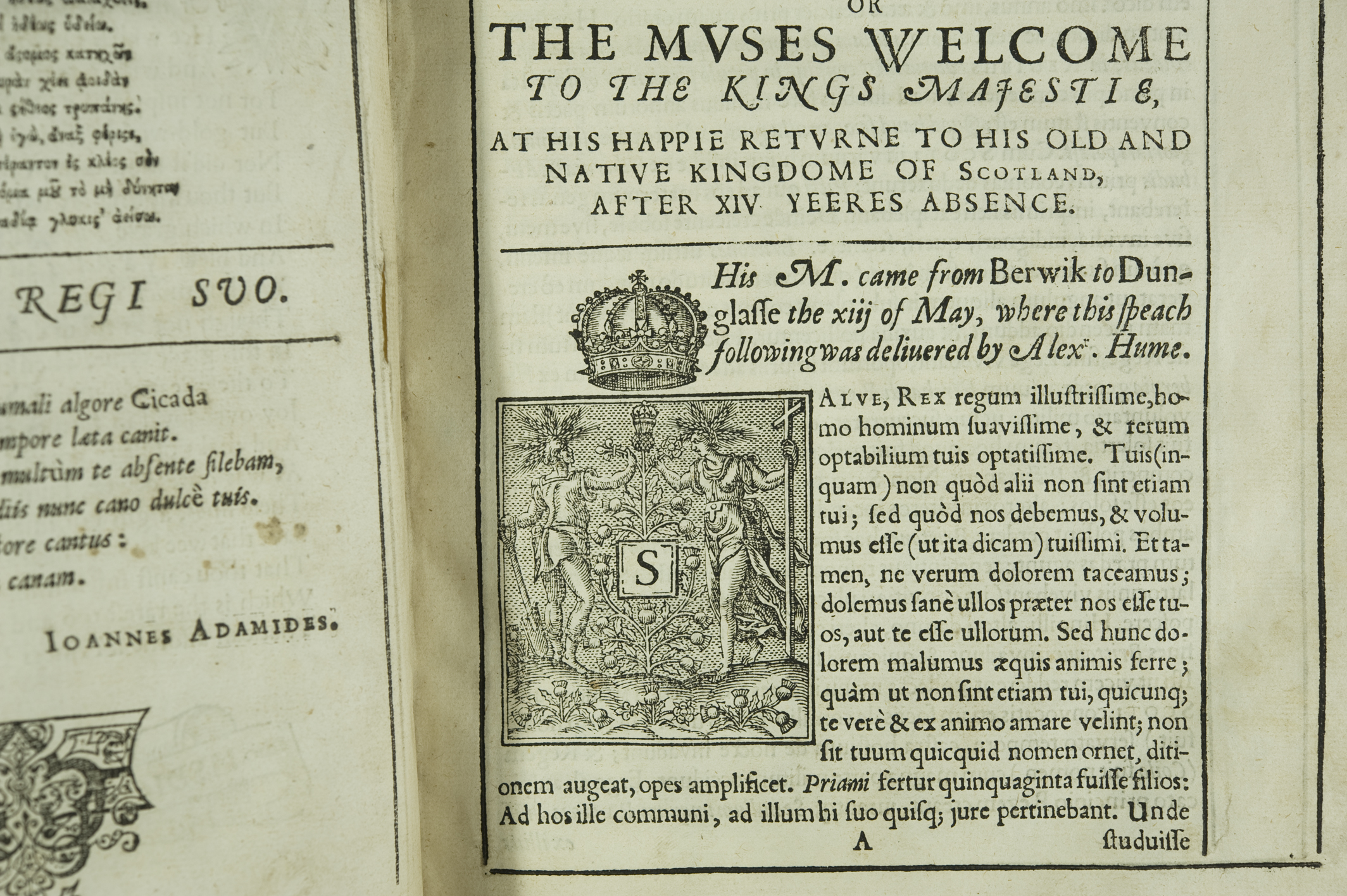
During James’s visitations to the cities, towns, villages and boroughs of Scotland many formal presentations of verse and addresses were given to the King. In 1618 a collection of these poems, addresses and a record on where the King and his entourage visited was printed in Edinburgh, entitled: The muses welcome to the high and mightie prince James.
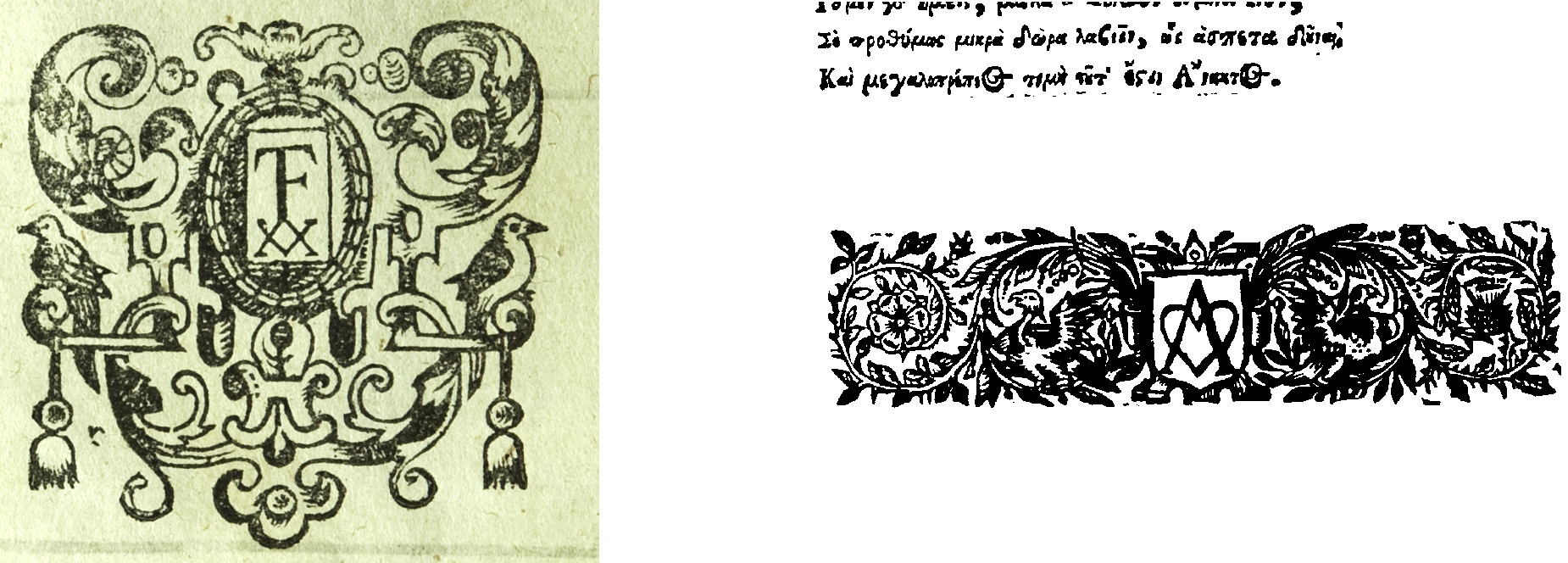
In fact The muses welcome was printed twice. There are two known editions of this collection, both dated 1618: one is the work of the King’s printer for Scotland, Thomas Finlason (and featured here), and the other is without an attribution for printer. However if the preliminaries of each edition are compared (right), one finds the printer’s device for Andro Hart on the verso of the second leaf of the unattributed edition, in the same position as Finlason’s device in his edition.

These editions are strikingly similar aside from a few ornaments and headpieces, however it is clear that Finlason’s edition was the one authorised by the crown. The muses welcome is truly a treasure trove of early 17th poetry by some of Scotland’s premiere bards, and even includes unattributed dedications by Sir Francis Bacon who was James’s Regent of England during this tour (he is identified by his family’s motto “Mediocra Firma” found at the foot of his dedications).
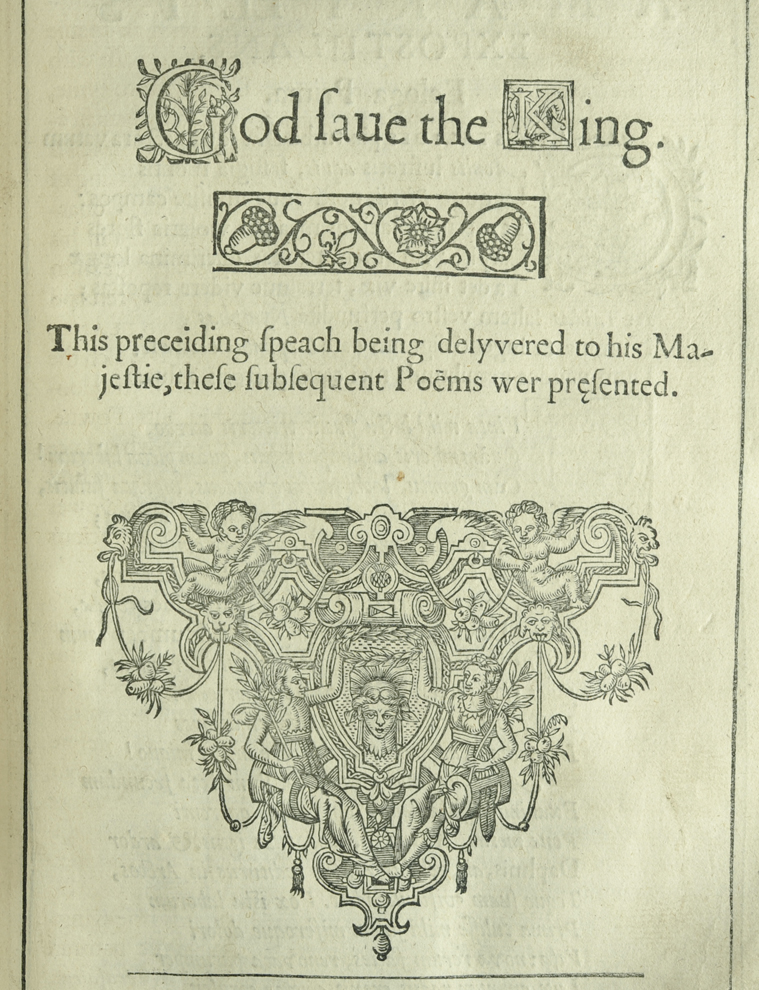
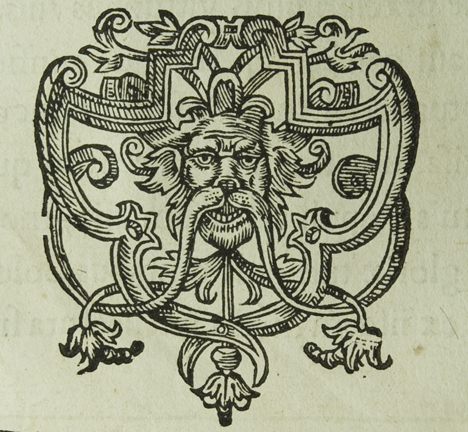
St Andrews owns a copy of the Finlason 1618 The muses welcome and its composition and illustrations have provided some inspiration very recently. This collection of verse is lovely to behold. The title page and frontispiece firmly place the reader in the Royal mindset with a striking woodcut portrait of King James with his facing a title page feautring a beautiful head-piece featuring the Royal Crest. This book is not what one would call ‘illustrated’ in strict terms of bibliographic description, however, it is decorated throughout with a wide array of woodcut initials, head- and tail-pieces, ornaments and devices.
Not only are the decorations of this book very fine, but the choice of font and layout of each page speaks to this work’s quality. The muses welcome features works in Latin, Greek and English and each is presented in a very clear, humanist font which has been given ample spacing. Most of the poems and addresses are divided by ornaments and most works feature at least one woodcut initial.
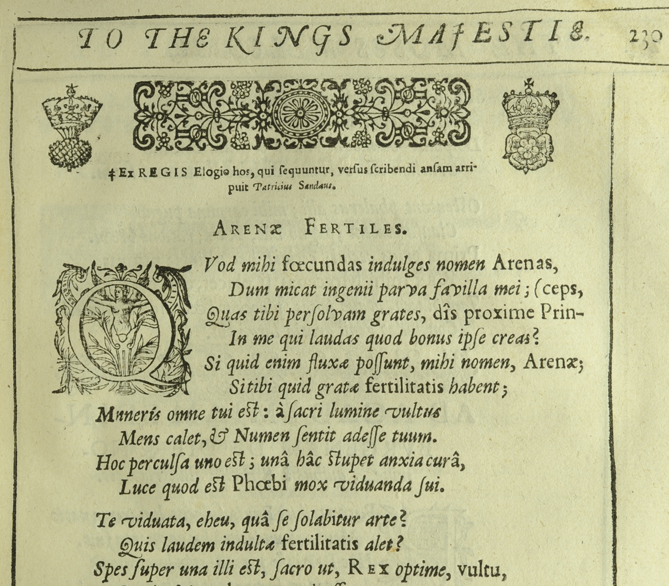
This book most recently came to our attention as we were planning an exhibition which opened on Saturday, 8 September 2012, entitled: A Royal Foundation: 400 years of the King James Library. The muses welcome records James’s visit to St Andrews on Friday, 11 July 1617. Amongst the numerous addresses given by local dignitaries and academics is a poem by Andrew Bruce, Professor of Philosophy, which was written five years previously after the arrival of a royal donation of over 200 books towards a new ‘Common Library’ in St Andrews. This poem equates James’s efforts in founding a library in St Andrews to the rebuilding of the Lighthouse of Pharos. This poem was key to the story we wished to tell in our exhibition, however it was only when we got the book out and began flipping through the pages that we realized how beautiful it was. We ended up taking design cues from The muses welcome for the text panels found throughout the exhibition gallery, and we even have used some of the woodcut initials, head- and tail-pieces and the portrait of James in our designs.
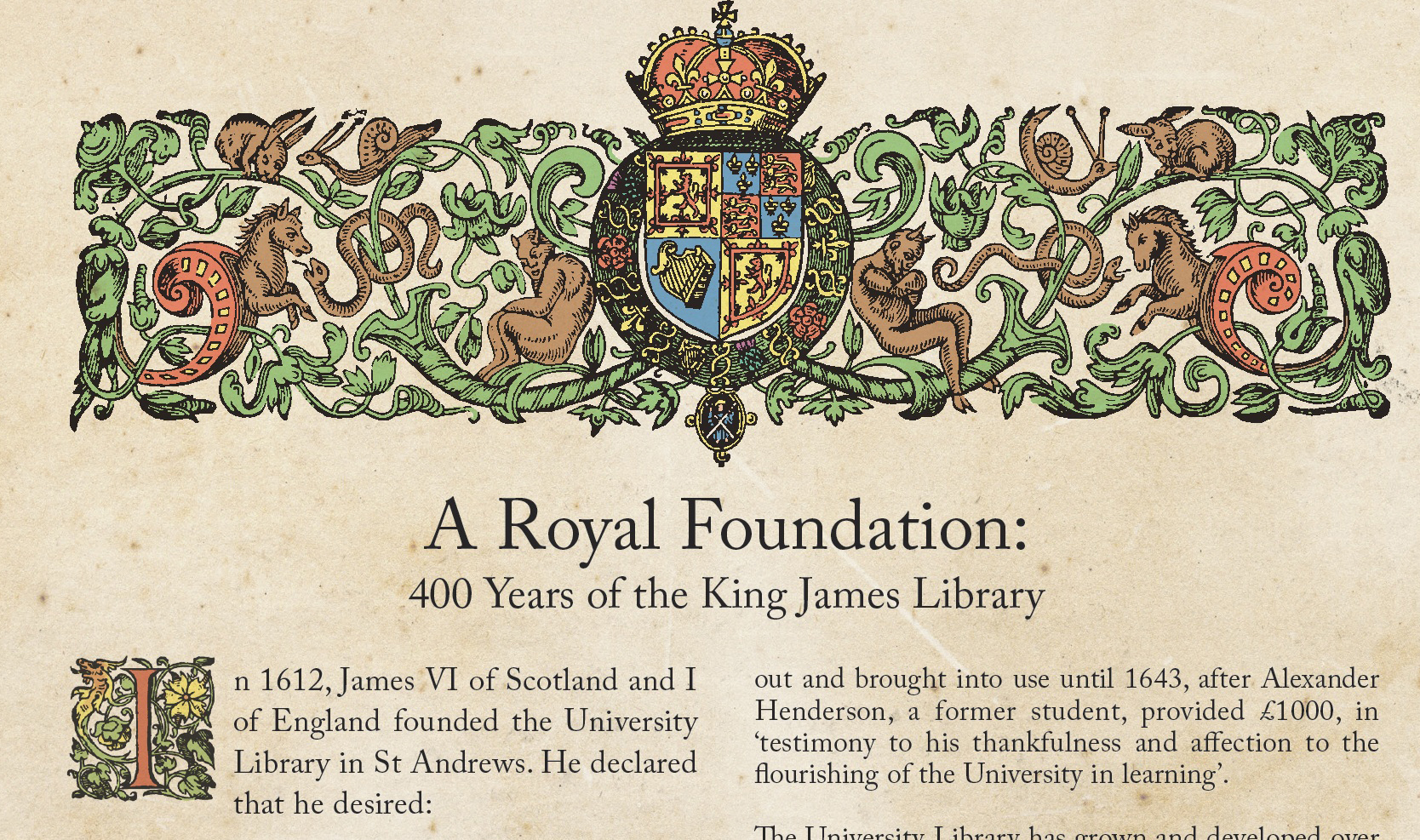
The process of designing the exhibition’s theme and style was a fluid process that received its first spark of inspiration from The muses welcome. I photographed the a near-full alphabet of all the woodcut initials found in the book, as well as all of the ornaments, and presented them to Duncan Stewart, who works for the University’s Print & Design unit. Duncan clues us into the process of taking images of a 17th century book and turning them into exhibition quality illustrations:
“Regarding use of the illustrations, I did enjoy working on these and although quite time consuming, did find it rewarding. I used Photoshop to firm up the basic line images where necessary and then added the colour on a lower layer – much in the way animators used to work with line drawings on acetate sheets which they would then colour in from behind to retain the sharp outline. I had colour references for the heraldry but otherwise just chose colours which I thought helped bring out the detail in the original illustrations. As I used simple flat colours, in order to help the colouring fit in and not look too cartoon-like, I left the images slightly transparent so that when they were placed on the mottled parchment backdrop some of the texture showed through.”
– Duncan Stewart, Print & Design
The muses welcome is a lovely book to behold, full of wonderful poetry and a day-by-day chronicle of a King’s visit to his homeland. This book is on exhibition until the beginning of December and can be consulted in the Department of Special Collections afterwards.
–DG
[...] Muses welcome” (1618) By markmacleo September 10, 2012 Partnership Originally posted on Echoes from the Vault our partners from Special Collections detail how the temporary exhibition design motif was [...]
[...] your education and outreach team got arranged? Daryl (Acting Rare Books Librarian, DG) installing The Muses welcome into a [...]
[…] on September 10, 2012May 16, 2018 by markmacleo Originally posted on Echoes from the Vault our partners from Special Collections detail how the temporary exhibition design motif was […]